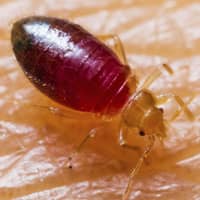
Effective Bed Bug Removal Services in Your Area

Bed bugs are parasitic insects that can invade homes and businesses year-round. Bed bugs also reproduce very quickly. This means that just one or two of these bugs introduced into a structure can quickly lead to a large infestation. And while their name suggests that they are found only infesting beds, it is very common for these insects to move out of bed and into other furniture and rooms.
Understanding the History of Bed Bugs
Most people have heard of bed bugs and have a basic understanding of what they are, but may be unaware of their history. Records show bed bugs were around in Egypt 3,300 years ago. They were introduced to the U.S. by colonists and flourished until the 1950s. That’s about the time when this country saw advancements related to pest control. The use of vacuums and washing machines also helped bring this pest under control. That is until the late 1990s. About that time, we started to see bed bugs make a major comeback. Reasons behind the resurgence included lack of public awareness, the ease and decreased cost of domestic and foreign travel, and the bed bug’s developed resistance to certain materials. Today, bed bugs continue to be a significant pest problem for hotels, school dorms, and other commercial environments. They are also problematic for homeowners and those living in apartment buildings. The good news is that there continue to be advancements in bed bug control and prevention.
How to Identify Bed Bugs and Their Reproductive Behaviors
Adult bed bugs are reddish-brown in color, have six legs, and are about 1/4 inch in length. They have a flat oval shape and have a similar appearance to an apple seed. After feeding bed bugs will turn red and will become more swollen and elongated in appearance. Bed bugs are often mistaken for carpet beetles and bat bugs. It is possible for adult bed bugs to live for several months without feeding on a host. Female bed bugs will lay 1-5 eggs per day which equals out to be about 540 eggs laid per female throughout their lifetime. The females will lay their eggs in cracks in walls or floors or on rough surfaces. After the nymph emerges from the egg it then takes approximately 21 days for them to reach maturity.
Signs Of Bed Bugs
It is quite possible to miss a bed bug infestation, especially if you don’t know what to look for. Not everyone reacts to bed bug bites, which is usually the easiest way to confirm a problem. Bed bug bites are typically small red welts and can be itchy. Often times you’ll find them in a cluster on your legs or arms or other exposed skin. You may also see a line of bites sometimes referred to as breakfast, lunch, and dinner. Other signs of bed bugs include:
- Rust-colored specks or dots on your bedding, mattress, bedspring, carpets, or walls. These flecks are blood that is left behind from their feedings.
- Dead or live bugs. This may be more noticeable on mattresses around seams and buttons. You should also look around the seams of upholstered furniture, behind wall hangings, and even inside nightstands and other furniture.
- Molted skins and eggs. You may discover piles of molted skin in an infested area. Likewise, it’s not uncommon to find tiny white eggs or egg casings near your mattress.
Bed Bug Prevention Tips
Though bed bugs are not really a seasonal pest, pest management professionals often see an increase in calls during the summer months. This may be attributed to increased travel and exposure to places that experience high bed bug activity including hotels and airports. Preventing bed bugs when you travel is impossible but you can certainly minimize your risk if you’re proactive. Next time you travel, try implementing these bed bug prevention tips:
- When traveling on a bus, plane, or train, keep your purses, bags, and coats up off of the ground.
- Inspect your seat for signs of bed bugs before sitting down.
- Before bringing your luggage into your hotel room check the room for signs of bed bugs.
- Keep items in your suitcase that are not being used in Ziploc bags
- When you get home do not take your suitcase inside. Instead, empty its contents in the driveway or garage and inspect for bed bugs. After luggage has been cleaned out, be sure to run the vacuum over it.
- When returning home from traveling clothing should be immediately washed in hot water.
- All clothing should be washed before they are put away.
Traveling is not the only way to encounter bed bugs. Oftentimes, these bugs are introduced on clothing and furniture, especially second-hand items. With that in mind, here is a bit more advice.
- Wash new and used clothing immediately after purchasing.
- Thoroughly inspect second-hand furniture before buying and bringing home.
- Avoid used mattresses, especially ones found out on the curb. You never know if that family had their own bed bug problem.
- When going to the movies, library, or shopping center, make sure to keep coats and bags up off the ground.
Getting Rid Of Bed Bugs
If you’re concerned about a bed bug problem in your home or business, your first instinct may be to run to the hardware store to stock up on sprays and other DIY bed bug control. Please don’t! Bed bugs are practically impossible to eradicate without professional help. For complete bed bug extermination, professional bed bug exterminators have the tools and technology to resolve this type of infestation. For more information on bed bug control from the Good Guys at American Pest Solutions, please give us a call or click here to fill out our form.

Trust Massachusetts' oldest family owned pest control company to protect your family & home.